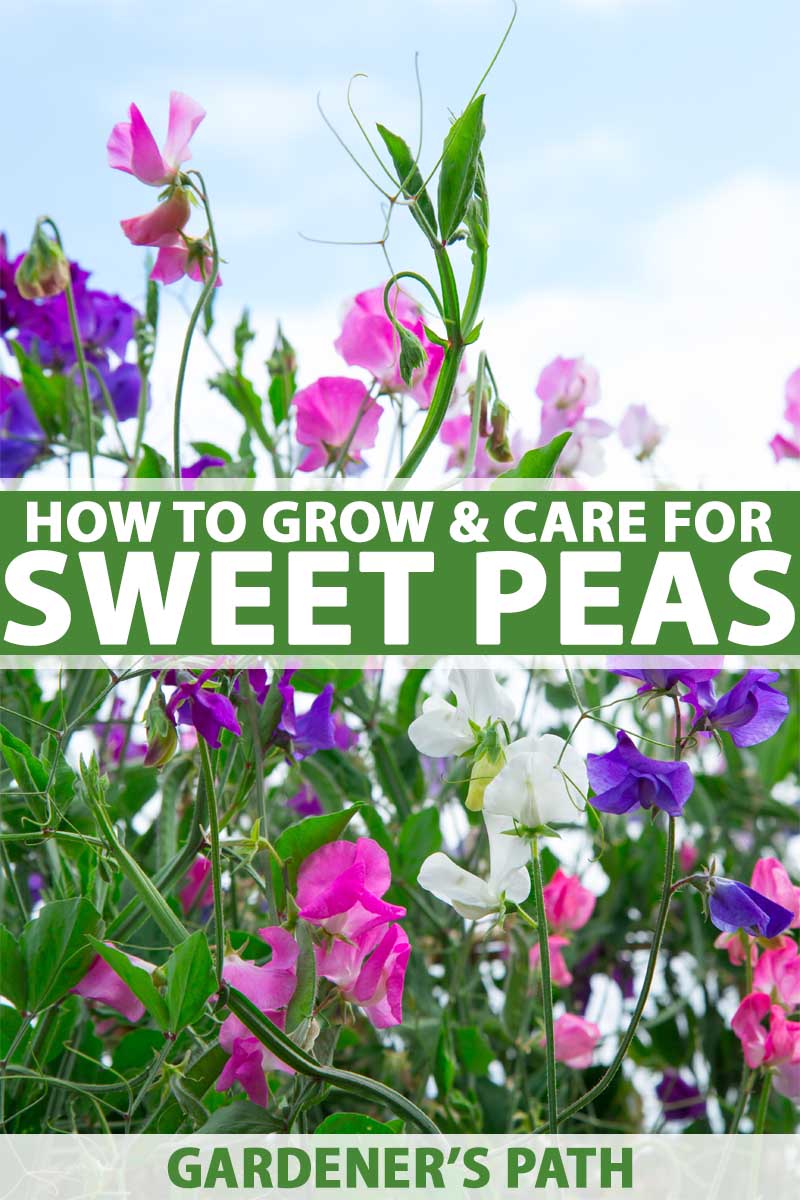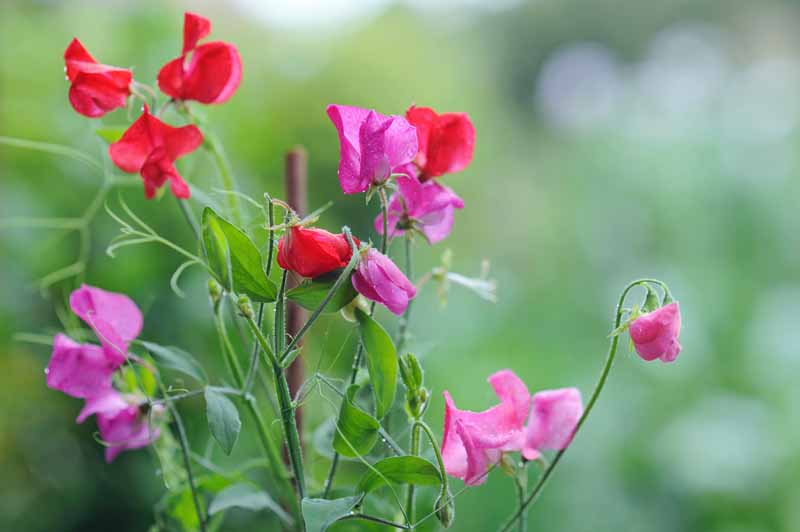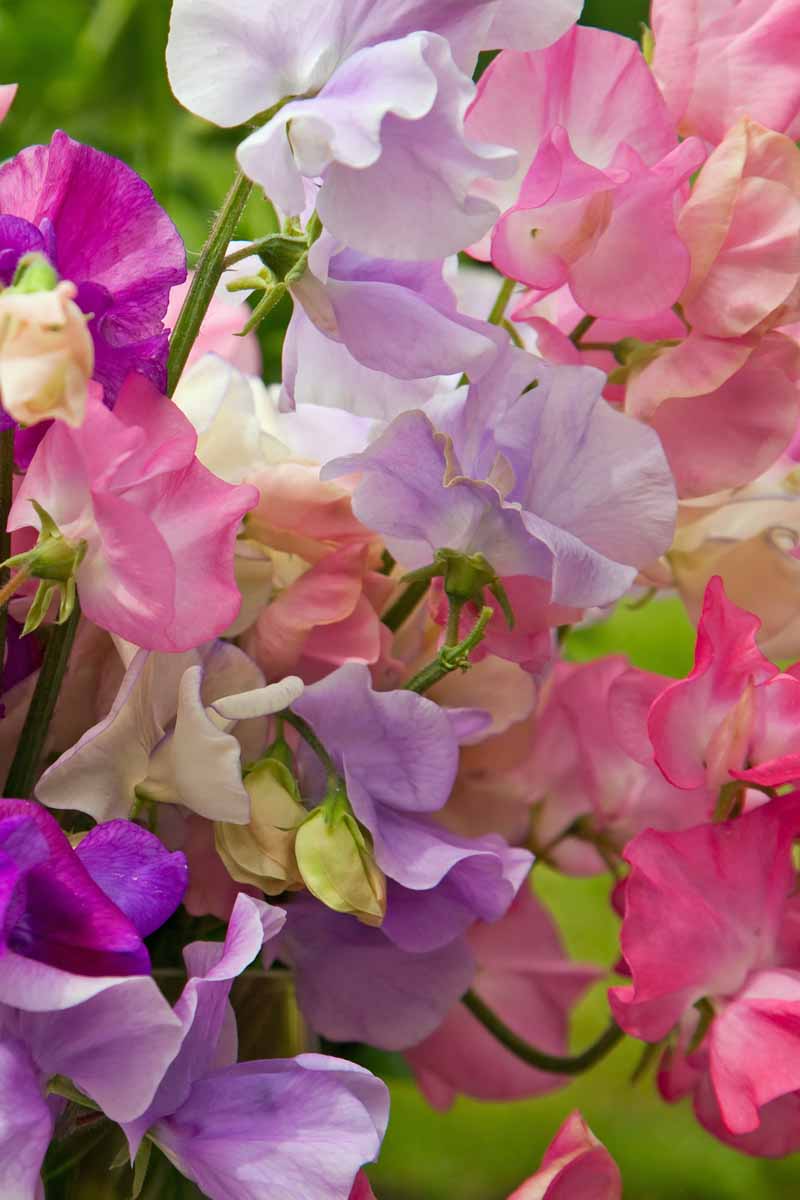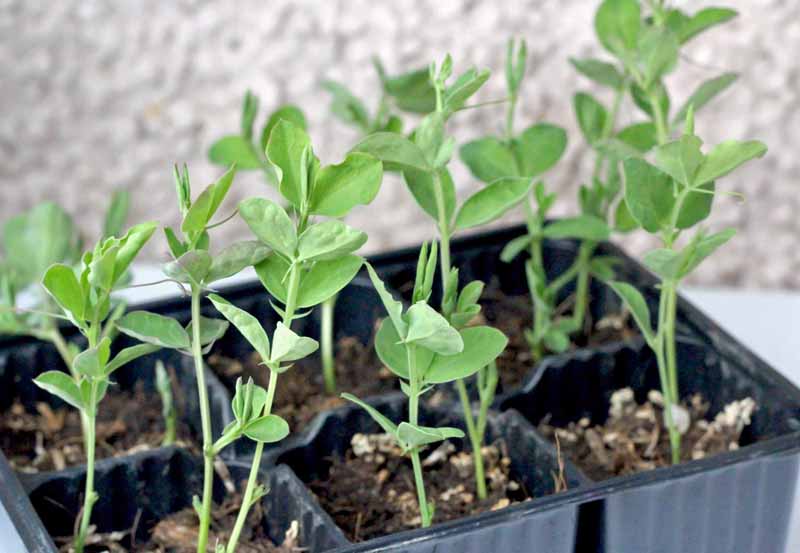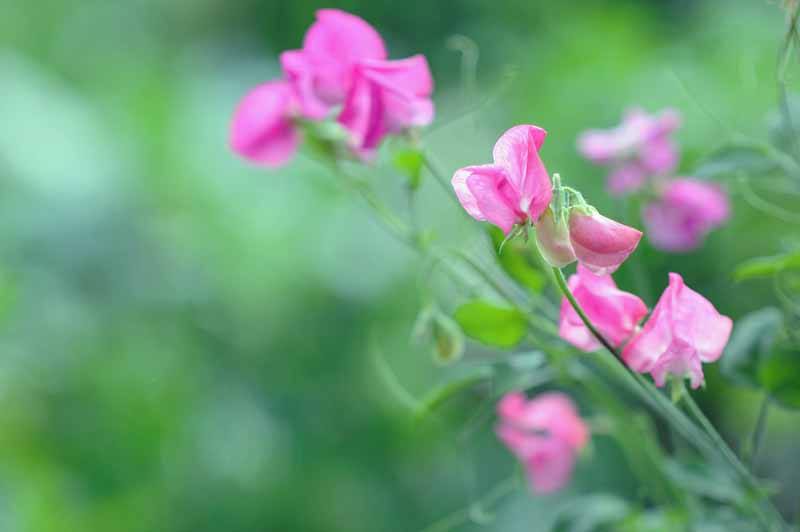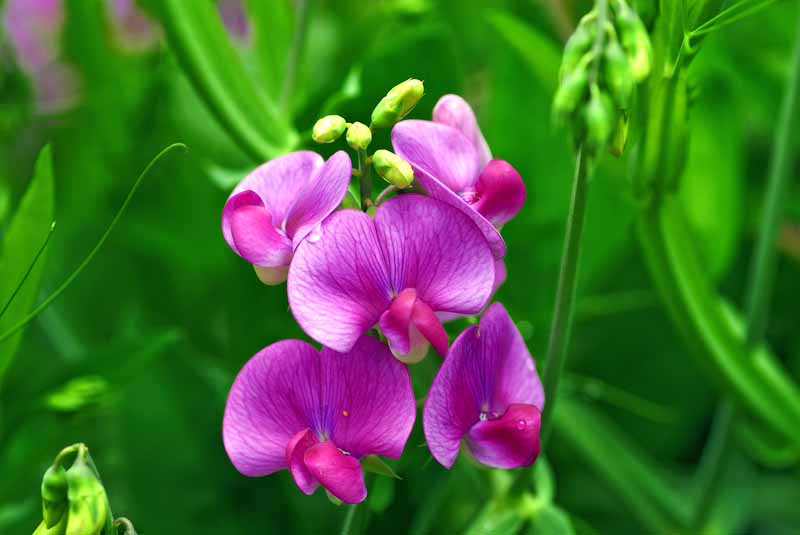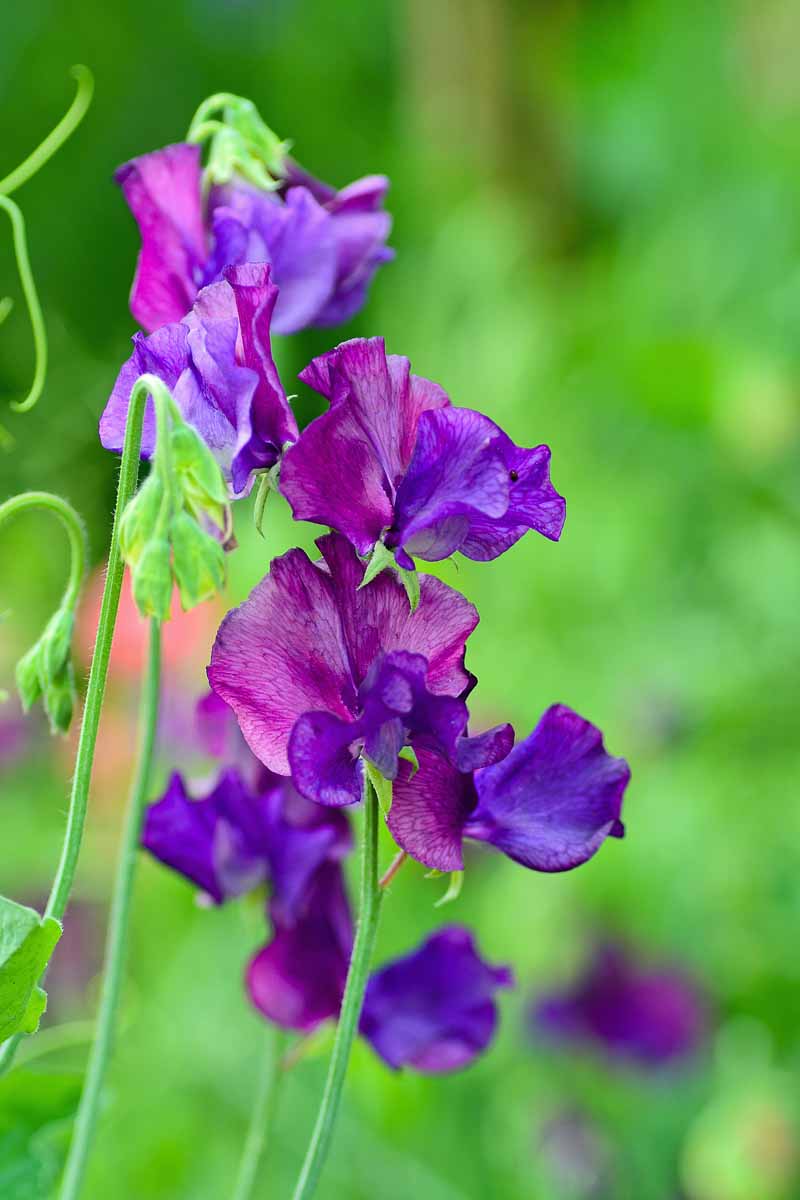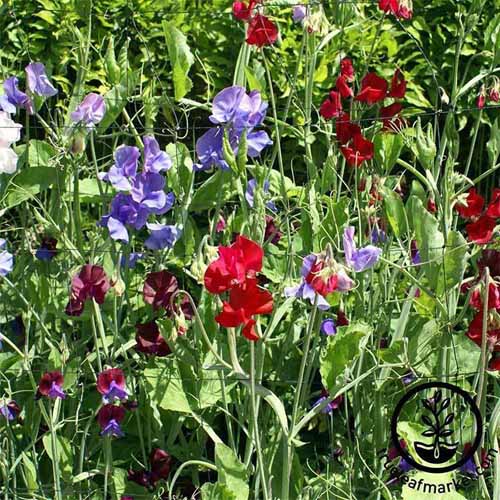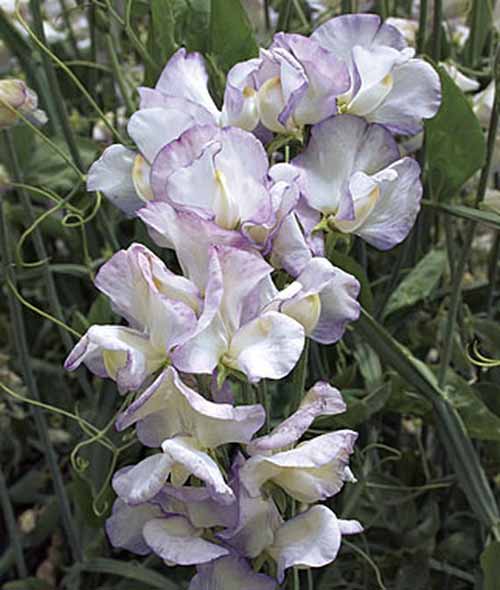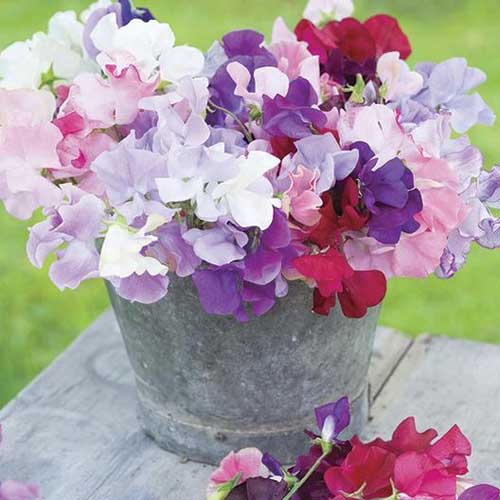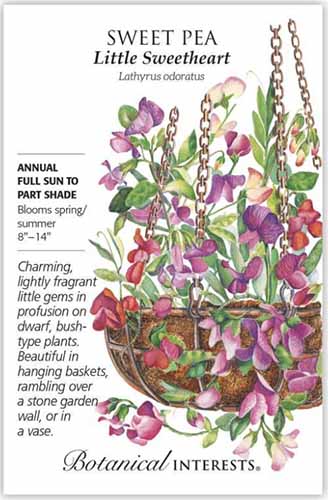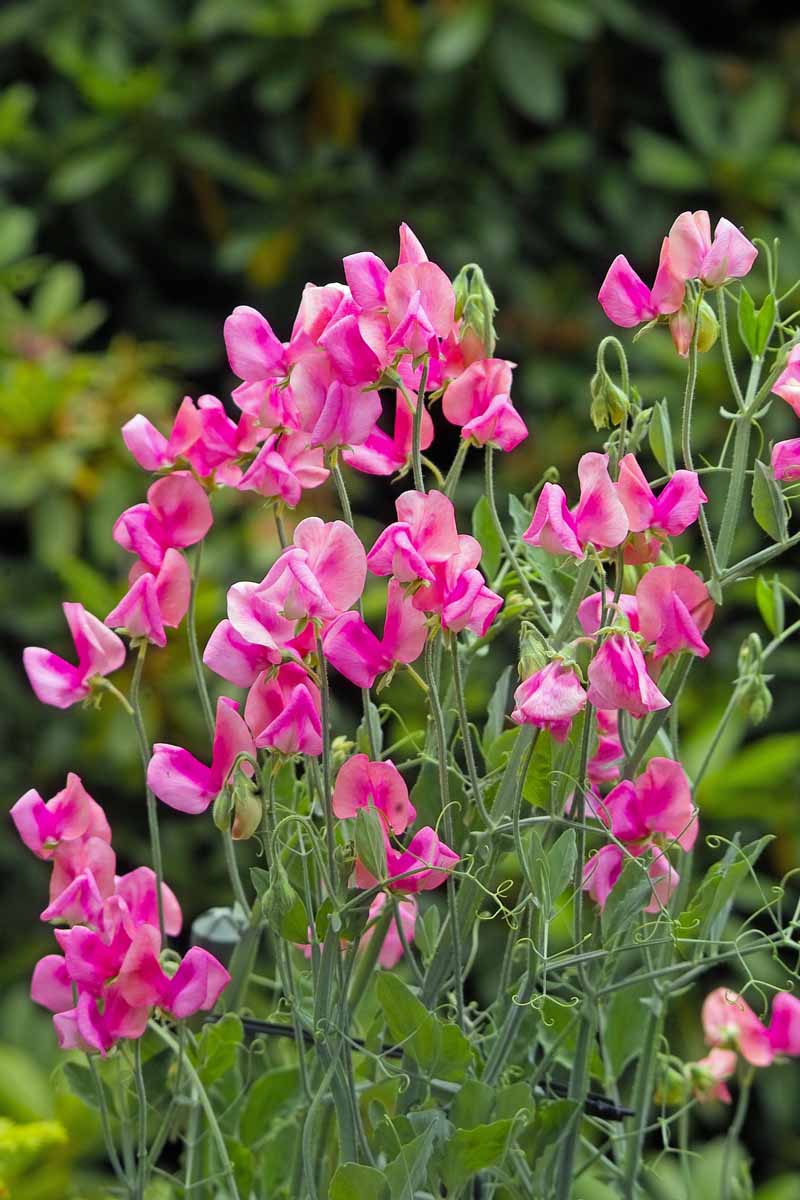Sweet peas one and all. All named for the lovely vining annual whose legendary beauty makes us desire to apply its nomenclature to those dearest to us. Let’s start with the flowers. A delicate, slightly folded petal that resembles a butterfly’s wings surrounds smaller petals that also flutter gracefully in the breeze. We link to vendors to help you find relevant products. If you buy from one of our links, we may earn a commission. She’s painted these blooms variously, with solid colors, in a bicolor fashion, or with streaks or other mottled designs. And as if that weren’t enough – the fragrance! A blend of honey and orange, some say, while others detect a note of rose. It’s simply the scent of sweet pea, and while it may vary from cultivar to cultivar, it’s nearly always captivating. The delicate stems and curling tendrils of L. odoratus add to its allure. It’s considered a desirable cut flower, and is often used in arrangements. Let’s get to know this eponymic plant. An important note before we get too far: Sweet peas are poisonous to our canine friends. So you might want to avoid planting these where Rover is tempted to snack.
What Are Sweet Pea Flowers?
The sweet pea flower (Lathyrus odoratus) is an annual climbing plant that is in the genus Lathyrus, a member of the Fabaceae, or legume family. It is native to the Mediterranean including southern Italy, the Aegean Island region, Sicily, and Cyprus. Most varieties grow between three and seven feet as a vine if supports such as trellises, arbors, fences, or walls are available. The annual species, L. odoratus, may be confused with the everlasting pea, L. latifolius, which is a perennial.
Cultivation and History
The first written record of this plant appeared in 1695, when monk and amateur botanist Francisco Cupani noted seeing it in northwestern Sicily. Cupani later sent some seeds off to botanists in England and Holland, one of whom published an article about the flower, which included the first known botanical illustration of L. odoratus. To this day, ‘Cupani’ remains a popular variety of the plant. Perhaps because of its long history, this plant is considered by some to be old fashioned. But many believe it’s as lovely as ever, and is refreshed often with new, ever-more-beautiful cultivars.
Propagation
Sweet peas are most commonly started from seed and many folks collect their own seeds from those grown the year prior. These plants like it cool, so you have to plan carefully based on where you live. They need about 50 days of cool temperatures from planting to blooming. The seeds will germinate in soil temperatures of 55 to 65°F, needing 10 to 14 days for this process. They can be killed back by hard freezes, but they are fairly cold hardy and can take frost without suffering too much damage. As a general rule, gardeners in the western United States should direct sow L. odoratus seeds from August forward. In the drier plains states, Midwest, and northeast non-coastal areas, start seeds indoors for transplanting after the harshest weather has passed and the ground has thawed. Or, direct sow if you’ll have enough not-apocalyptic-but-still-cool-enough days to get from planting to bloom. Southerners can direct sow in November or December. Many gardeners have better germination rates if they lightly nick the seeds with nail clippers. If you’re starting seeds indoors, use a good-quality potting mix in small pots, such as jiffy pots. Different cultivars are planted at different depths so check the back of your seed packet for the recommend planting depth for your specific variety. Place your pots in a sunny spot, and give them plenty of water, ensuring that there’s good drainage.
Get ‘Em in the Garden
If you started your seeds indoors, begin to harden them off when the plants have three or four pairs of leaves. Move your trays to an outside location that gets direct morning sun and afternoon shade. After three or four days, move them to a place where they’ll get direct sun all day. After another four or five days, you can transplant the peas to your garden. When transplanting, pick a sunny or mostly sunny location and prepare the soil by adding compost and turning the entire patch. This will allow the roots to grow deeper while continuing to feed on rich soil. Most sweet peas types are climbing vines, though you can change that via pinching (more on that in a minute), and furthermore, some cultivars are more bushy (more on that in a minute, too). Assuming you’re planting a climber – some can grow to six feet tall – place your transplants near a railing, wall, or fence, or construct some other kind of support. This could be a trellis, a frame, or a teepee made of bamboo canes. If you’ve placed your plants near a railing or wall, you can help them climb by adding support rings to the structure and gently weaving the vines through as they grow. You could also leave your vines unsupported so they form a ground cover. This plant needs elbow room for proper air circulation and to ensure the roots don’t get too crowded. Place transplants at least six inches apart for proper growth. Transplant into a hole the same depth as the container from which you’re moving the plant. If you’re direct sowing outdoors, plant one to two seeds per hole in fertile, well-drained soil, spaced six inches apart.
How to Grow: Pinch for More
If you’re not growing a bushy cultivar, but you’d like to encourage a more bushy shape, you can train these plants into such a form by pinching. Pinching back the plant is easy. Just pinch off the stem tip and new leaf growth right above an established set of leaves, using clean shears or the tips of your fingernails. It’s best to wait to pinch back the plants until they’ve been established outdoors. If they aren’t going to be transplanted, then wait until your sprouts reach about four inches tall. Keep up the pinching throughout the season when you see vines looking a little leggy, or want to increase the bushiness of your plant. These plants will go to seed more quickly if the soil is allowed to dry out. Water deeply in the morning once a week, or as needed depending on your local climate and weather conditions.
Growing tips
Grow when it’s cool outsidePrefer sun, but will tolerate a bit of shadeKeep soil moist
Pruning and Maintenance
Deadhead faded flowers and cut away any emerging seed pods. This will prolong blooming and helps to keep your plants from going to seed early. Another way to prolong the blooming season is to fertilize regularly. Mixing in compost will keep your soil rich and moist, which in turn will feed your sweet peas and encourage strong flowering.
Managing Pests and Diseases
There are not too many issues with growing sweet peas in the garden, just a couple of things to watch out for:
Cultivars to Select
Dozens of L. odoratus cultivars exist today, with plenty to choose from.
Royal Family Mix
‘Royal Family Mix’ You might like to start with a mix of colors, as available in this ‘Royal Family Mix’ from True Leaf Market. This seed mixture produces five- to six-foot vines and is available in various quantities.
High Scent
‘High Scent’ If fragrance is what you’re after, consider this ‘High Scent’ variety from Burpee. The large white blooms are edged in lavender.
Old Spice Mix
Old Spice Mix Consider the ‘Old Spice Mix’ from Eden Brothers if you need a heat-tolerant variety. This classic is both colorful and produces a strong, intoxicating fragrance.
Little Sweetheart
‘Little Sweetheart’ Sweet Pea Seeds If container gardening is your thing, or if space is tight, consider ’Little Sweetheart,’ available from Botanical Interests. These plants grow eight to 14 inches tall.
Insects
A few pests can bother this plant. You might see aphids, which can be blasted off with a stream of water. For caterpillars and cutworms, consider sprinkling diatomaceous earth around the base of your plants. If you see leafminers or thrips, consider traps. For spider mites, try neem oil.
Diseases
If plants are packed too tightly or don’t get enough sun, mildew can be a problem. Address this issue by thinning plants and/or applying a fungicide.
Best Uses
As we mentioned above, this plant is a capital climber. It looks lovely crawling up a fence, wall, or other support. Some gardeners select a dwarf cultivar and grow it in a hanging basket. Some grow it in a pot and let it trail over the sides. Many options are available to you! What’s in a name? If it’s a tender sobriquet bestowed upon those dearest to us, it brings to mind a lovely and fragrant plant adorned with delicate blooms in a rainbow of colors. While some might consider L. odoratus old fashioned, there’s something to be said for honoring the longevity of a plant that has remained popular for centuries. Give this beauty cool weather, a sunny spot, and even, moderate watering, and it will reward you for weeks with showy flowers. Have you grown this well-loved annual in your garden? Share your experiences below and let us know what you love most about the gorgeous flowering sweet pea. And for more floral delights to add to your garden, read more here:
Charming Dianthus: Fragrant, Pretty, and Easy to GrowIt’s Time to Plant Four O’ClocksGive an Old-Fashioned Beauty New Life: Grow Wax Begonia
